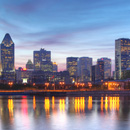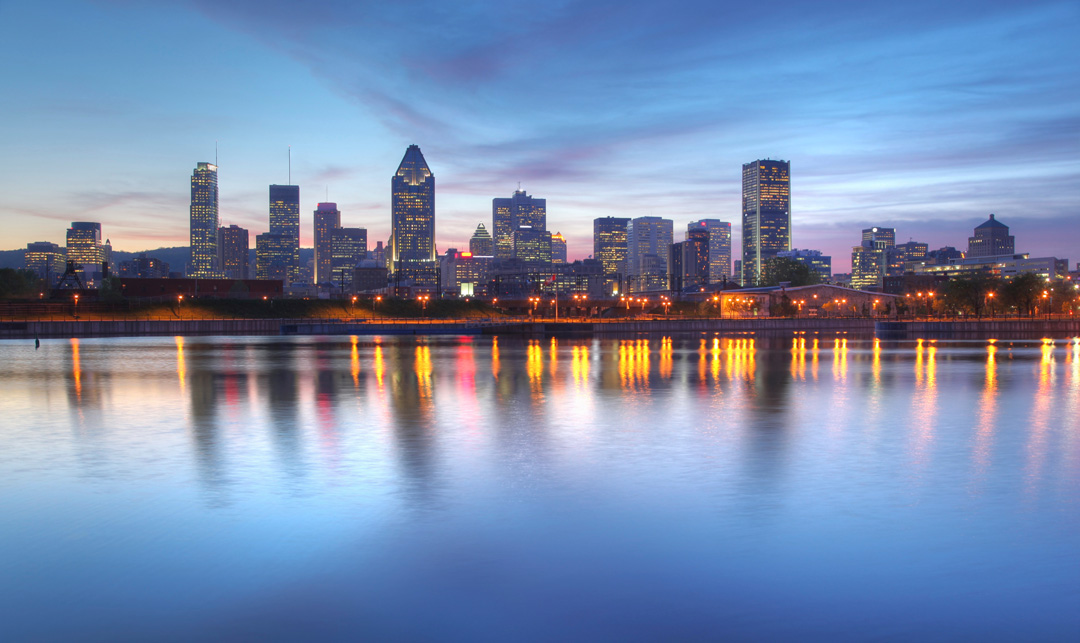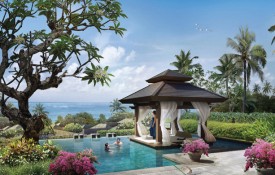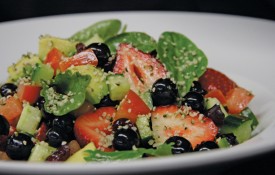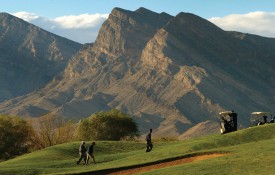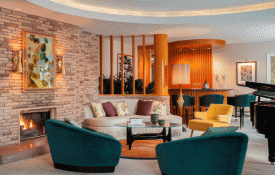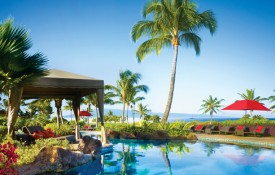By land and by water, guide Martin Robitaille of Culture Quest Tours and a Mr. Poirier, guest guide on board an electric pollution free Le Petit Navire boat tour, personify Montréal’s coming of age on its 375th anniversary. There is a mix of pride and playful self-effacement in their discourse as they simultaneously detail the city’s distinctive neighborhoods and weave in their personal histories.They reference the long-standing Anglophone vs. Francophone tug-of-war coinciding with the American Revolution. They speak about how their attitudes toward Montreal evolved through their lives, tried living in other cities, and then returned to Montréal to fall in love with it all over again.
Montréal has had share of political clashes (Prime Minister Pierre Trudeau’s unified Canada stance vs. the separatist movement under Parti Quebecois leader Rene Levesque) and economic downturns (major Canadian companies relocating to all-Anglophone Toronto) in the past few decades. Even through the ups and downs, however, Montréal’s joie-de-vivre and cultural touchstones consistently drew visitors and businesses in from abroad. While Prime Minister Justin Trudeau carries on his father’s tradition of charisma and optimism, present day Montréal echoes the mood. The architecture itself is a perfect metaphor: French Colonial architecture co-exists with a constantly evolving skyscraper-studded downtown and neighborhood enclaves with restored 19th and early 20th century structures.

On approach at the Queen Elizabeth Hotel in Montreal
Something Old, Something New
Robitaille and Poirier further explain resilience and innovation have always been in Montréal’s DNA, from the downtown “underground city” and Park Jean-Drapeau (the repurposed site of the former Expo ‘67), to new Cirque de Soleil shows in development to the city’s culinary explosion and the revitalized Vieux Port (complete with its own zip line) and bike trail-enhanced Lachine Canal. The Old City is more charming than ever, as many of the souvenir shops have been replaced with high-end furniture showrooms, boutiques and brasseries. Various neighborhoods (Plateau, Mont-Royal, Latin Quarter, The Village, Griffintown) are successfully becoming destinations in their own right, and the craft cocktail scene and young designers provide plenty of incentive for repeat visits.

Montreal Museum of Fine Art
Several hotels sit in the heart of all of this color and activity, where anything worth seeing is only a few minutes by foot or the spotless and arty METRO subway. Among the most noteworthy, the Queen Elizabeth Hotel (where John and Yoko asked the world to, “give peace a chance” in 1969) will reopen in 2017 in time for the city’s birthday bash next year. Montreal Château Champlain (built for Expo ’67) meanwhile, boasts lobby access to the Bonaventure METRO stop, the swanky Bar Samuel de Champlain, 29,000 square feet of meeting accommodations, 611 beautifully appointed rooms and Presidential Suite.
The perfect starting point for any trip to Montréal is Place Ville Marie’s top floors. Just below the 46th floor observation deck and historic exhibits, the exhibition #MTLGo! Is a hip “Lonely Planet” guide transformed into a full-on multi-media experience. It is divided up into several sections covering the city’s cuisine, performing arts, neighborhoods and sports. Each section features four short films narrated by a local. You “like” whatever film catches your attention by tapping the screen with an interactive bracelet. After you watch several films, tap the bracelet on another terminal by the elevators to get a custom itinerary.
The second to-do on the list, weather permitting, is explore parallel main streets Rue Ste. Catherines and Rue Sherbrooke to hit several of the essential cultural hubs such as McGill University, Montréal Museum of Fine Arts and the McCord Museum. There are also stunning churches every few blocks as well as views of the “mountain” that the city is named for. Some may perceive the slope lined with palatial estates and Mount Royal Park as a hill. However, in the eyes of locals it represents the importance of thinking big in one’s outlook. The Place des Spectacle, which anchors the east end of St. Catherine Street also has a fresh look suited to the 21st century, even as it remains epicenter for the Montréal Jazz Festival and other cultural happenings during the warmer months, as well as the MAC (Musee d’Art Contemporain).

Orange Rouge, one of the hidden secrets of Montreal’s Chinatown
On Mange Bien Ici
As one would expect in a city with deep French roots, Montréal’s restaurant scene is superb. However, it’s even better when savvy bon vivants in the know steer you towards what’s hot and what’s cool. Louis Loranger, Director of Sales & Marketing at the Marriott Château Champlain, and Ocean Properties VP/frequent visitor Kerry Morrissey, led our merry band to meals at Orange Rouge, Accords and Da Emma. Accord specializes in cheerfully seasonal small plates, an excellent bar with various locally-produced gins, and off-the-wall wine pairings that somehow work with the dishes. Da Emma brings one of the most authentically Italian dining experiences in North America to a former women’s prison near Griffintown. Les Enfants Terribles has obvious appeal as a business lunch destination, with its location at Place Ville Marie and 44th floor/360 degree views and contemporary spins on Quebecois and North American comfort food and drink. Holder, under the direction of chef Simon Laplante, brings the Brasserie experience to Old Montreal.
There are also inexpensive places in Montréal vying for the affections of sophisticated palates. While ethnic institutions on St. Laurent Boulevard (Schwartz’s Deli and Coco Rico Portuguese chicken sandwiches) draw both ardent fans and curious first-timers, Chez Jerry, created by celebrity chef Jérôme Ferrer, delivers glorious variations on poutine and lobster rolls, washed down with locally-produced craft beers or colas. During the Jazz Festival, there were huge lines of people snaking into Chocolat Favoris seeking custard-like soft serve ice cream dipped in one of eight luxuriant chocolate hard shell topping flavors. In a city where all kinds of farmers’ markets abound, the generations’ old Jean-Talon Market in Little Italy reigns supreme. Boutique-y products up for sale alongside the produce include Domaine Labranche’s maple and apple ciders, artisanal cheese, charcuterie and pastries.

The Jean-Talon Market
When it comes to Montréal nightlife, joie de vivre is not new. Although Canada had its own “Prohibition” era in the early 20th century, Québec was one of the first provinces to end it in 1921, with the Alcoholic Beverages Act. The availability of liquor and fun prompted thirsty Americans to look north to Montréal in the early 1920s, even inspiring a pop song called “Hello, Montréal,” as things were shaking (literally and figuratively) at some places 24 hours a day.
In the 21st century, craft cocktail-focused bars such as Mal Necessaire, Mayfair, La Distillerie and Bar Kabinet are stirring up excitement both with their bartending artistry and imaginative decor beyond Canada. According to Pierre-Olivier Trempe, co-founder of bartending competition organizer Made With Love, strict rules set by government agencies (S.A.Q.; Régie des Alcools du Québec) continue to challenge Montréal bartenders. However, he believes these challenges ultimately adds to the city’s colorful restaurant and bar scene..
“Our bartenders are among the most creative in the world because of those restrictions,” he says. “As we cannot do things like make our own bitters or infusions, we have to find ways to innovate and keep our patrons coming back.”
This mindset spills over not only into Cirque de Soleil but also the city’s architecture and public art. Though Montréal’s origins may be French, and the British put their stamp on the city, it is ultimately a city with universal appeal for business and leisure travelers alike.
tourisme-montreal.org






































